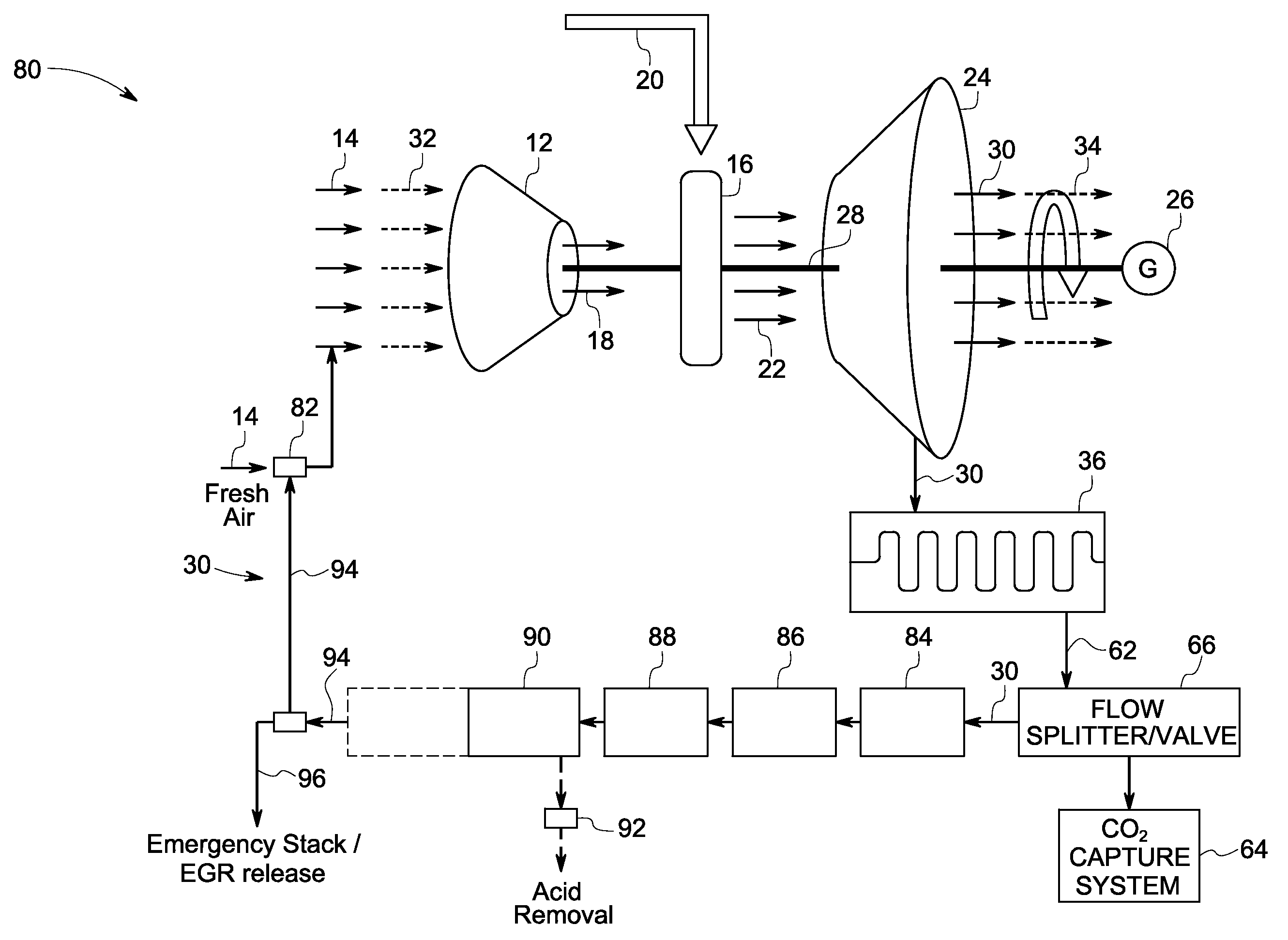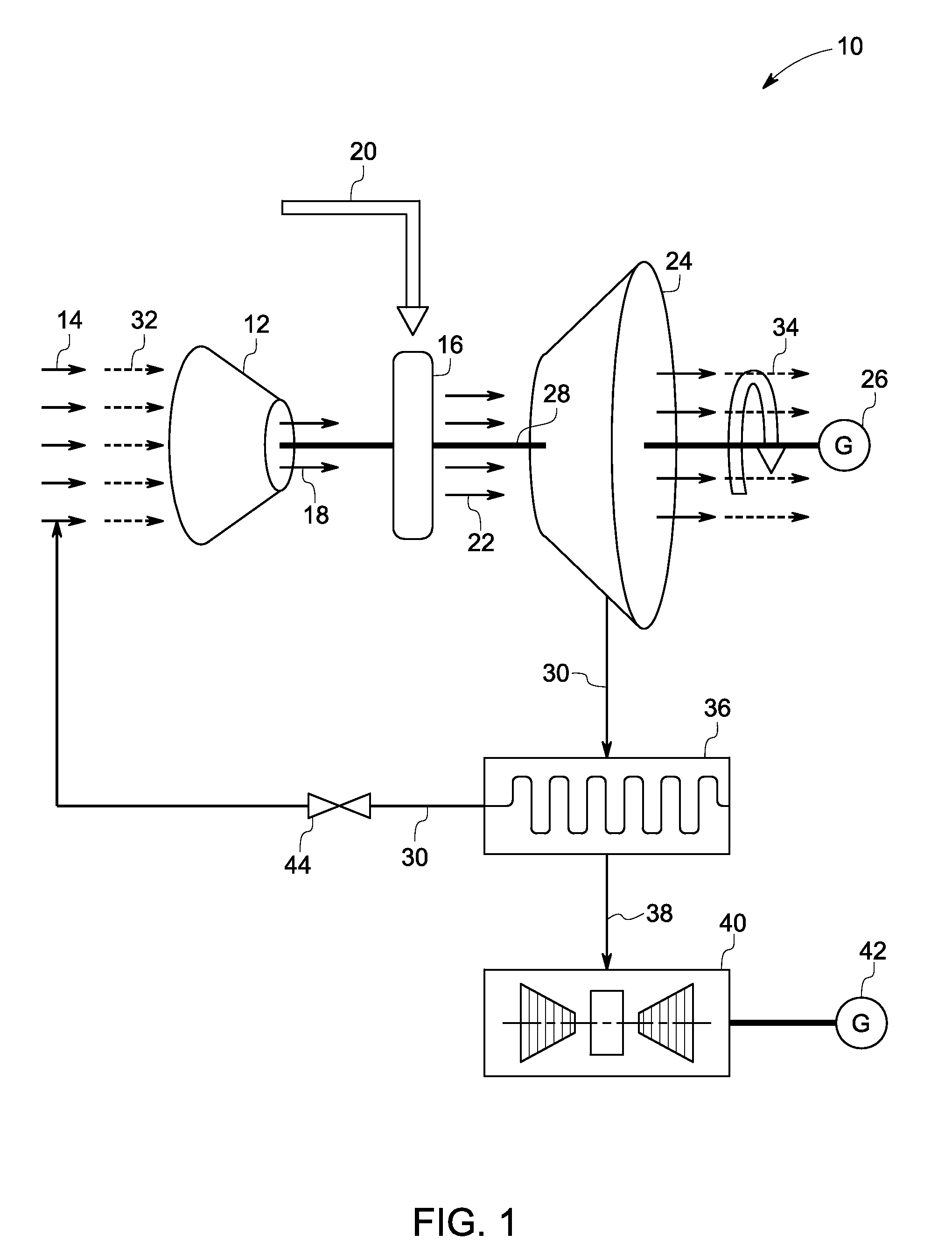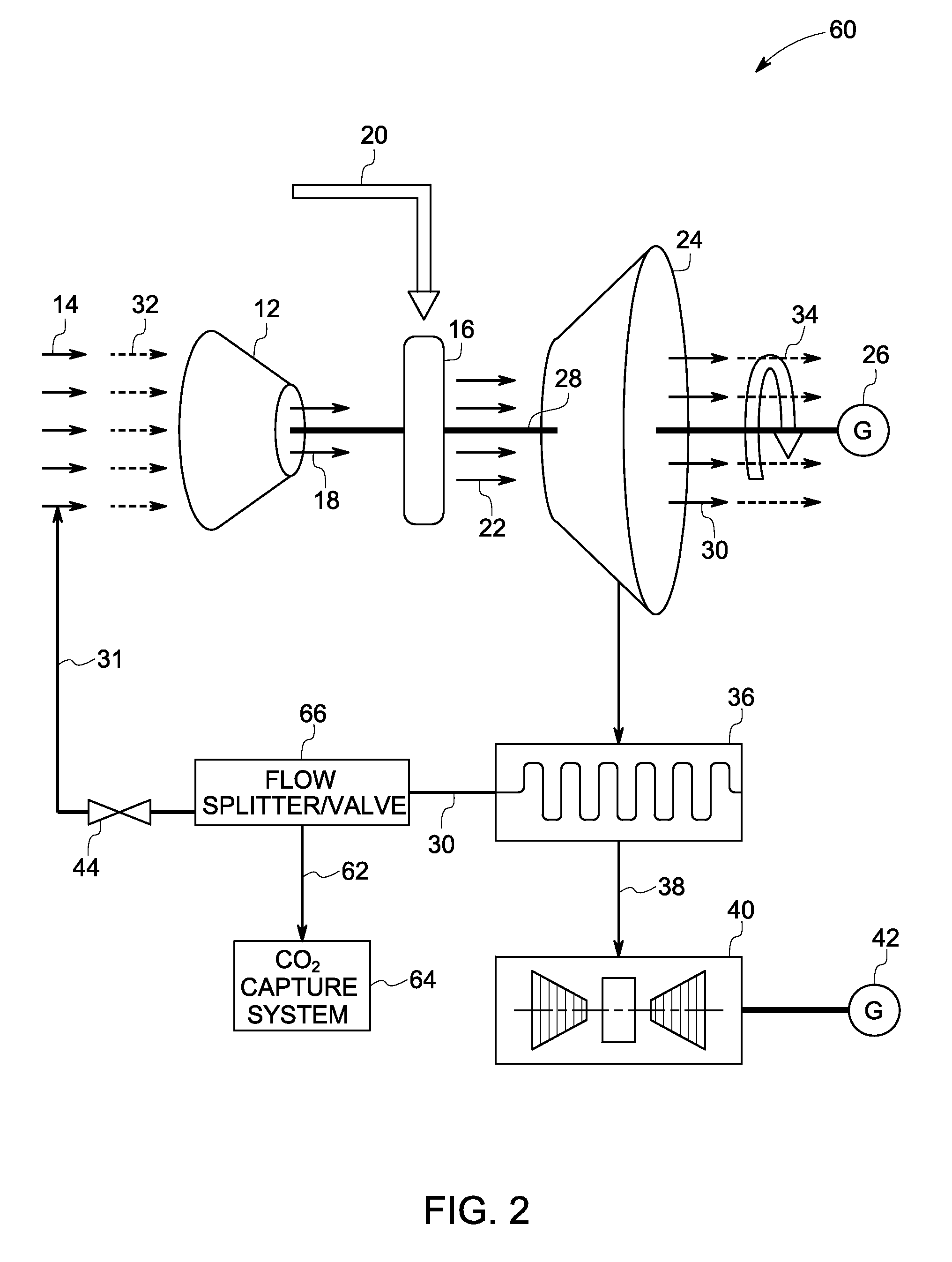Low emission turbine system and method
a low-emission, turbine technology, applied in the direction of machines/engines, mechanical equipment, electric generator control, etc., can solve the problems of high co emissions, small operability window of such combustors, and difficulty in operating premixers employed in combustors outside of their design spa
- Summary
- Abstract
- Description
- Claims
- Application Information
AI Technical Summary
Benefits of technology
Problems solved by technology
Method used
Image
Examples
Embodiment Construction
[0020]As discussed in detail below, embodiments of the present technique function to reduce emissions in turbine systems, and to provide combustion technologies to enhance overall efficiency of the turbine systems, while reducing NOx formation. In some of the specific embodiments, the present technique includes employing exhaust gas recirculation (EGR), along with a rich-quench-lean (RQL) mode of combustion to minimize emissions such as NOx.
[0021]Turning now to the drawings and referring first to FIG. 1 a turbine system 10 is illustrated. The turbine system 10 includes a compressor 12 configured to compress ambient air 14. Further, the turbine system 10 includes a combustor 16 that is in flow communication with the compressor 12. The combustor 16 is configured to receive compressed air 18 from the compressor 12, and to combust a fuel stream 20 to generate an exhaust gas 22. In one exemplary embodiment, the combustor 16 includes a Dry Low Emission (DLE) or a Dry Low NOx (DLN) combust...
PUM
 Login to View More
Login to View More Abstract
Description
Claims
Application Information
 Login to View More
Login to View More - R&D
- Intellectual Property
- Life Sciences
- Materials
- Tech Scout
- Unparalleled Data Quality
- Higher Quality Content
- 60% Fewer Hallucinations
Browse by: Latest US Patents, China's latest patents, Technical Efficacy Thesaurus, Application Domain, Technology Topic, Popular Technical Reports.
© 2025 PatSnap. All rights reserved.Legal|Privacy policy|Modern Slavery Act Transparency Statement|Sitemap|About US| Contact US: help@patsnap.com



